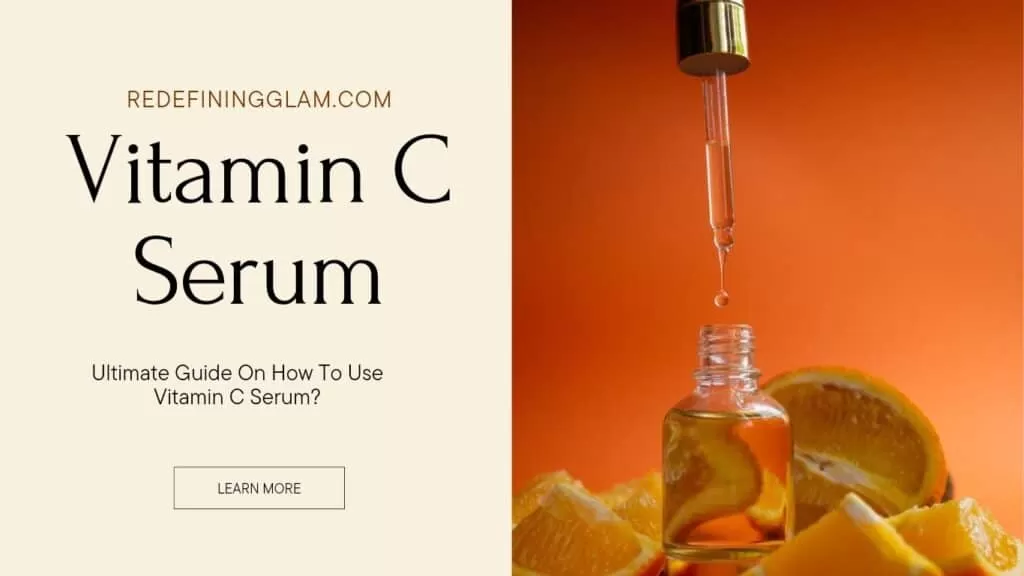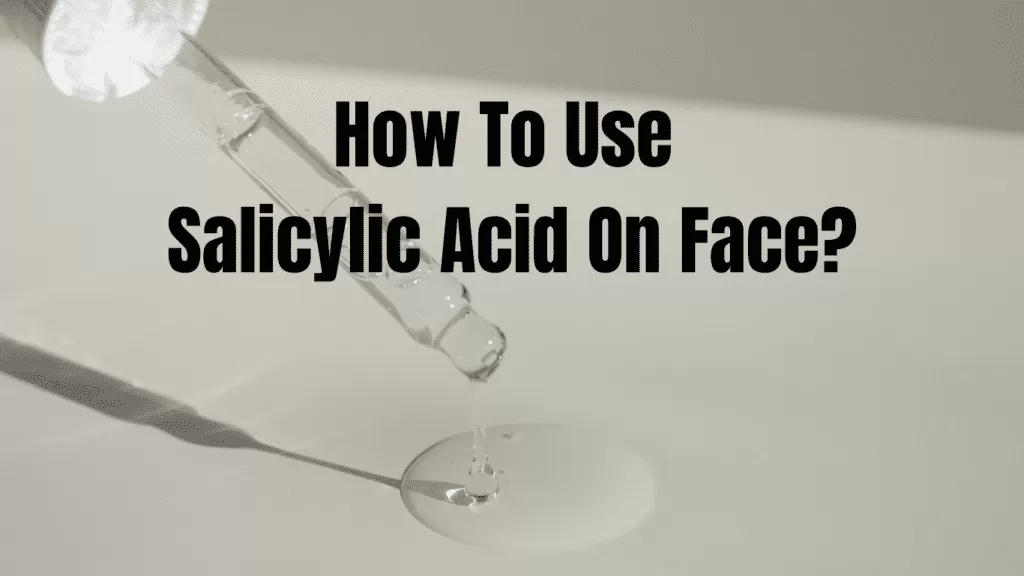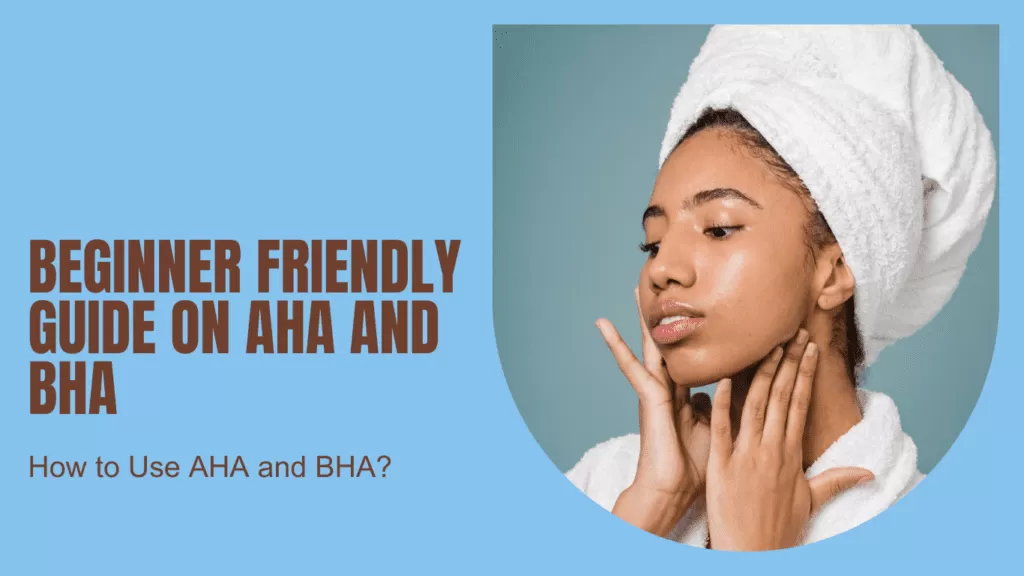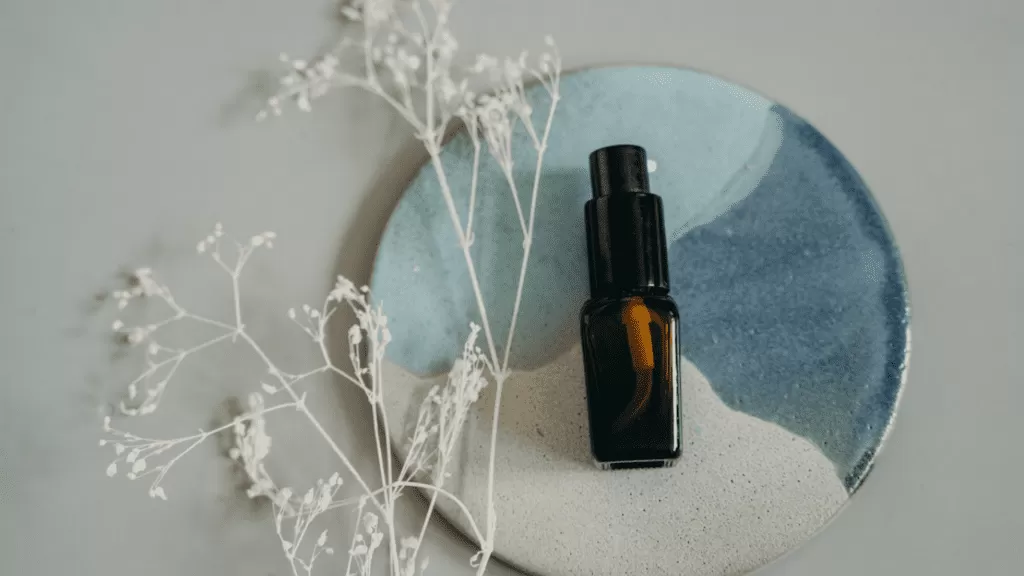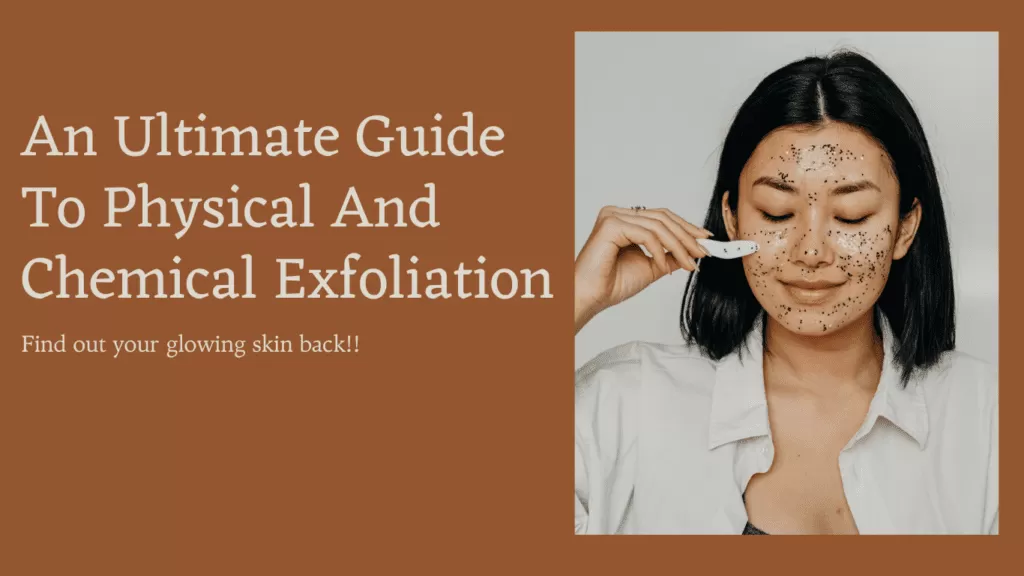
Exfoliation is a crucial process to boost skin rejuvenation. It removes the dead skin cells and gives you clear skin. But do you know, if not done properly, it can cause more harm than good? Before you start exfoliation, you need to have a brief understanding of different types of exfoliators. In this ultimate exfoliation guide to physical and chemical exfoliation , we will talk about both and how you can use exfoliators to exfoliate your skin safely.
Physical And Chemical Exfoliation- Why Are They Important?
Exfoliating your skin at regular intervals is significant for skin rejuvenation. If you feel that your skin looks great one day or bad the other day, then the real culprit is dead skin cells. And you need exfoliation.
Our skin periodically goes through the process of skin rejuvenation. Our skin barrier sheds periodically to reveal new and glowing skin.
But if, for some reason, the dead skin cells are not removed on time, it can cause skin problems. You might notice oily skin, acne, hyperpigmentation, or blackheads.
It will make your skincare routine ineffective. No matter how expensive the product you use. And if you do makeup, you will not have that flawless base. Also, your makeup can turn cakey or flakey. Every girl’s nightmare. Yes, we know you don’t want that. And therefore, girls don’t forget to exfoliate and remove those dead skin cells.
Physical Exfoliation
Physical exfoliators, as the name suggests, physically remove dead skin cells. They come with grounded grains/nuts. They remove dead skin cells when they are rubbed against the skin. It includes scrubs, clay masks, and gommage peeling gel.
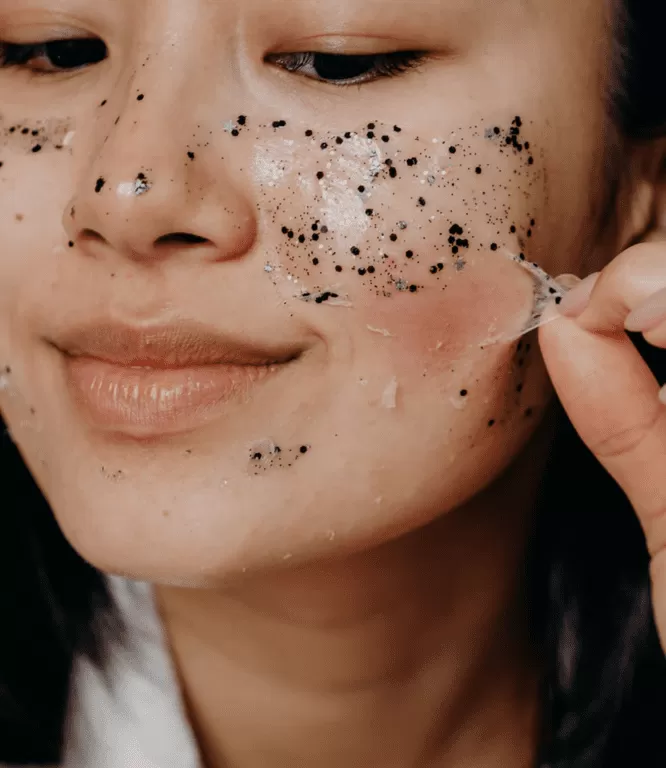
Scrubs
Scrubs are one of your best friends when it comes to exfoliating. They often contain sugar grains or ground nuts. But we recommend you get sugar ones as the grains get dissolved from the heat of your hand, and you are left with a gentle exfoliator to remove that dead skin without damaging your barrier.
Also, look for scrubs that contain shea butter and other oils to help you massage and exfoliate, at the same time.
Clay Masks
The clay mask sticks to the skin and removes the dead skin. They also take away excess oiliness and sebum in the process. If you suffer from oily skin, then you must use clay masks.
Gommage Peeling Gel
The gommage peeling gel is made up of cellulose. It does not remove the dead skin cells directly but clumps them together so that they can remove by themselves.
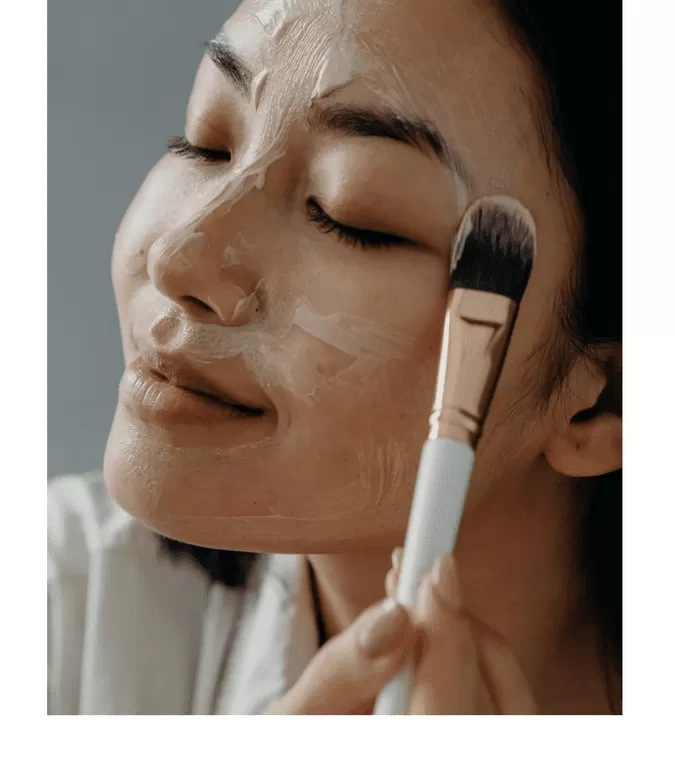
Chemical Exfoliation
Chemical exfoliation is a great way to remove dead skin cells with leftover chemicals on the skin.
If you do makeup and skincare regularly, the ingredients keep on piling on the skin, clogging the pores. It can trigger blackheads, whiteheads, and acne. You have to get rid of them. And for that, you should use chemical exfoliation.
As the name suggests, it chemically exfoliates the skin giving you smooth skin. It dissolves dead skin cells and is less harsh on the skin than physical exfoliators.
The most popular chemical exfoliators are AHA and BHA. But with the moving time, we have also discovered other exfoliators like LHA and PHA. Now let’s talk about them.
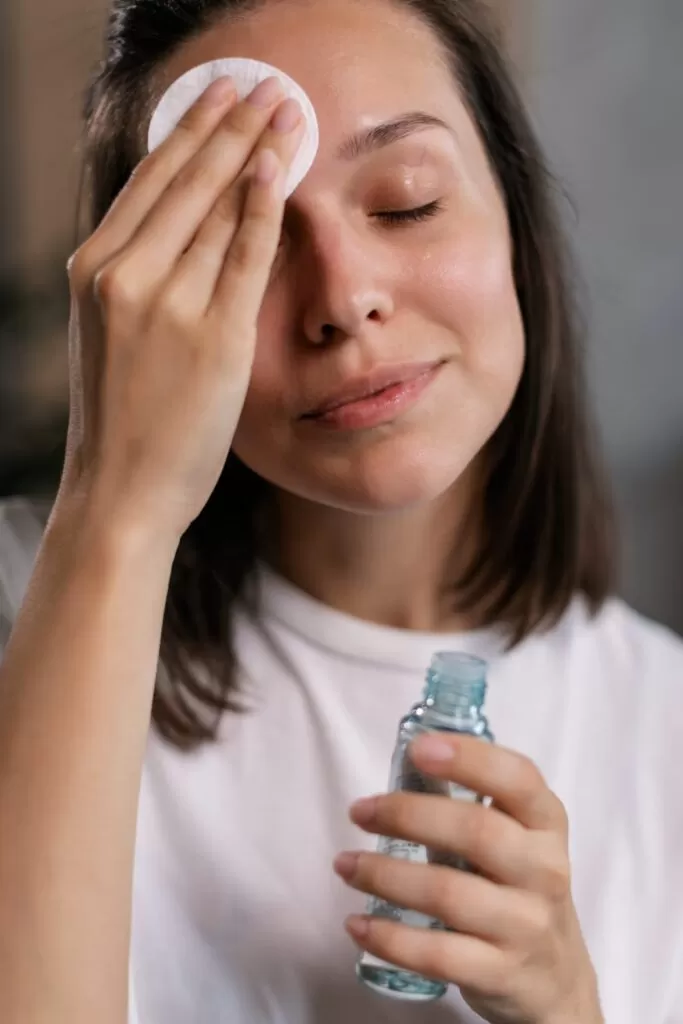
AHA
AHA stands for alpha hydroxy acid. It is water-soluble acid that works great to dissolve the dead skin cells piled on your skin surface. It also moisturizes the skin and doesn’t make it dry like the BHAs.
The most common type of AHA is glycolic acid. Others include citric acid, lactic acid, and tartaric acid. They all work great to break the bonds holding the dead skin cells on your skin’s surface.
Best for:- Dry and normal skin
BHA
BHA stands for beta hydroxy acid. They are fat soluble and can penetrate deeper into the skin than the AHA. While the AHA only works on the surface, BHAs can effectively remove dead skin cells from the pores. It works magically to unclog clogged pores and removes excess sebum.
The most common type of BHA is salicylic acid. Others are beta hydroxy, tropic acid, etc. They are on the drier side and also remove excess oils from the skin. It works best for the oily and acne-prone skin.
Best for:- Oily and acne-prone skin.
PHA
PHA stands for polyhydroxy acid. LHA and PHA are new to the skincare market. They are a gentle version of AHA and BHA.
PHA is a new version of AHA but gentle. They provide similar results but are not harsh on the skin. They contain larger molecules than AHA and are absorbed slowly by our skin. They also help in maintaining Ph balance and the skin rejuvenation process. A few examples of PHAs are gluconolactone and lactobionic acid.
PHA also provides additional moisturization properties and is best suited for people with dry and thin skin. It is also good for sensitive skin.
LHA
LHA stands for lipohydroxy acid. They are a gentle version of BHAs. Its molecules are larger than BHAs and hence are less irritating. They inherit all the exfoliating properties of BHA but are tolerable.
One example of LHA is capryloyl salicylic acid. They are a gentle version of salicylic acid. They are best for acne-prone and sensitive skin.
Best suited for Dry & acne prone skin and Sensitive skin.
Which One Is Right For You?
Now to decide which is right for you, you have to first think about your skin type. Do you have dry skin, or do you have oily skin?
If you don’t know that, we suggest you take a blotting paper right now. Go and take one.
- Take that paper close to your t-zone area and slowly move it over the face.
- Done? Now see if it is oily or still dry. If it is oily, you have oily skin, and vice versa.
- Also, if you have observed that it was oily only on the t-zone area and the rest of the face is dry, then you have a combination type.
It is a simple test but can be helpful to you in determining the best skincare routine for you.
Final Words
I hope this guide on exfoliation: physical and chemical exfoliators helped you. Now you know everything about exfoliation, right? So, after exfoliating your skin, you can achieve flawless skin? No, your work doesn’t stop there. Aftercare is also crucial.
After using any exfoliators, follow up with a good skincare routine. In the daytime, don’t forget to add sunscreen. Also, if you are exfoliating at night, apply sunscreen the next day. After exfoliating your skin, your dead skin cells are removed. And you are left with new and smooth skin. It is more sensitive & you need to protect it.
You should also follow up with a good moisturizer. Also, no matter how tempting it seems, don’t use more than one exfoliating product. Whether you use chemical exfoliators as a cleanser or a peeling solution, one is enough. Also, don’t apply any active ingredients, as they can cause skin flushing and damage your skin.
Finally, don’t exfoliate daily. Exfoliation is crucial, but when used daily can harm your skin barrier. If you are using a physical exfoliator, then once a week is good. And for chemicals, once or twice is enough.
